SUMMARY
This is AI generated summarization, which may have errors. For context, always refer to the full article.
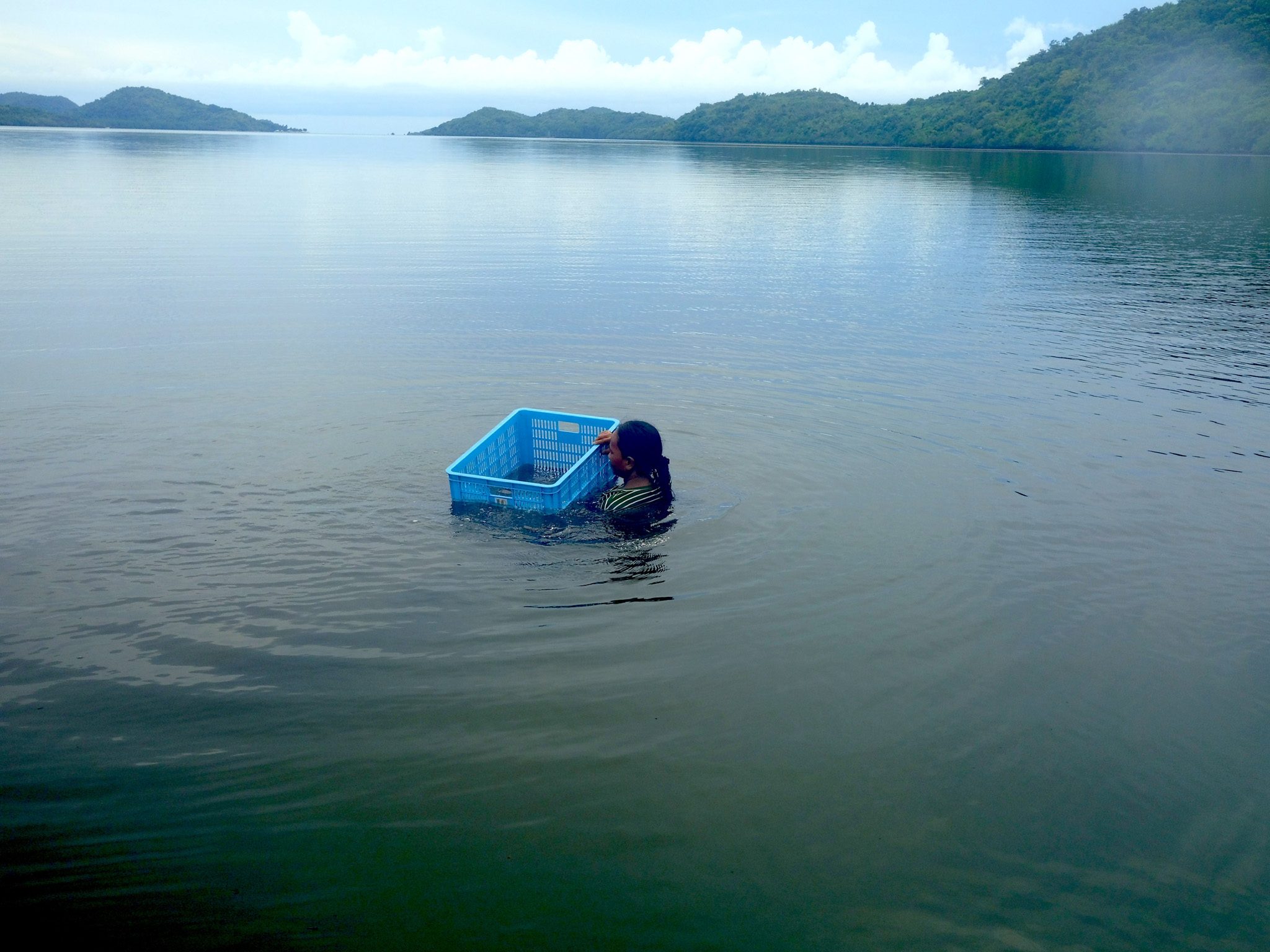
For the indigenous Tagbanuas in Calauit Island, a part of Busuanga town in the northwestern coasts of Palawan, there had always been a clear delineation of the roles men and women played in the community.
The men mostly spent their days out in the sea to fish so they could provide for their families. Women, meanwhile, stayed at home to take care of their children and other household duties.
In 2020, however, the COVID-19 pandemic and the environmental issues in the coastal community triggered a change in this setup. Due to limited movement, income from fishing became unpredictable, moving the Tagbanua women to find alternative ways to support the needs of their families and their children’s schooling.
Aside from venturing into sewing face masks for sale and community savings initiatives in partnership with local organizations, the women also went into fishing and marine conservation. This led to the establishment of a 58.4-hectare Calauit Women-Managed Area (WMA) within their ancestral waters.
With the Tagbanua women now stepping into uncharted territory, they are not only challenging their community’s long-held beliefs and traditions. By protecting their environment, they are laying down the groundwork, too, for possibly changing the course of the lives of the younger Tagbanuas.
Searching for spaces
When the pandemic hit in 2020, fish prices in Busuanga were impacted, which, in turn, lowered the household income of fisherfolk families in the island, said Lerma Eco, chairperson of the research, education, and community participation committee of the Calauit WMA.
“‘Yung mga asawa po nilang mga kababaihan, nalilito rin po. Kumbaga po, nahihirapan po sila kung paano po i-budget po ‘yung kaperahan na galing po sa pangingisda ng kanilang mga asawa,” Eco said. (The wives were having a difficult time budgeting the meager income their husbands earned from fishing.)
Tourism in Calauit Island – a known dugong (sea cow) watching destination – suffered heavily, too. With no tourists coming in because of the COVID-19 lockdowns, the women had to stop some of their sources of livelihood, such as sewing dugong souvenir dolls and cooking food for visitors.
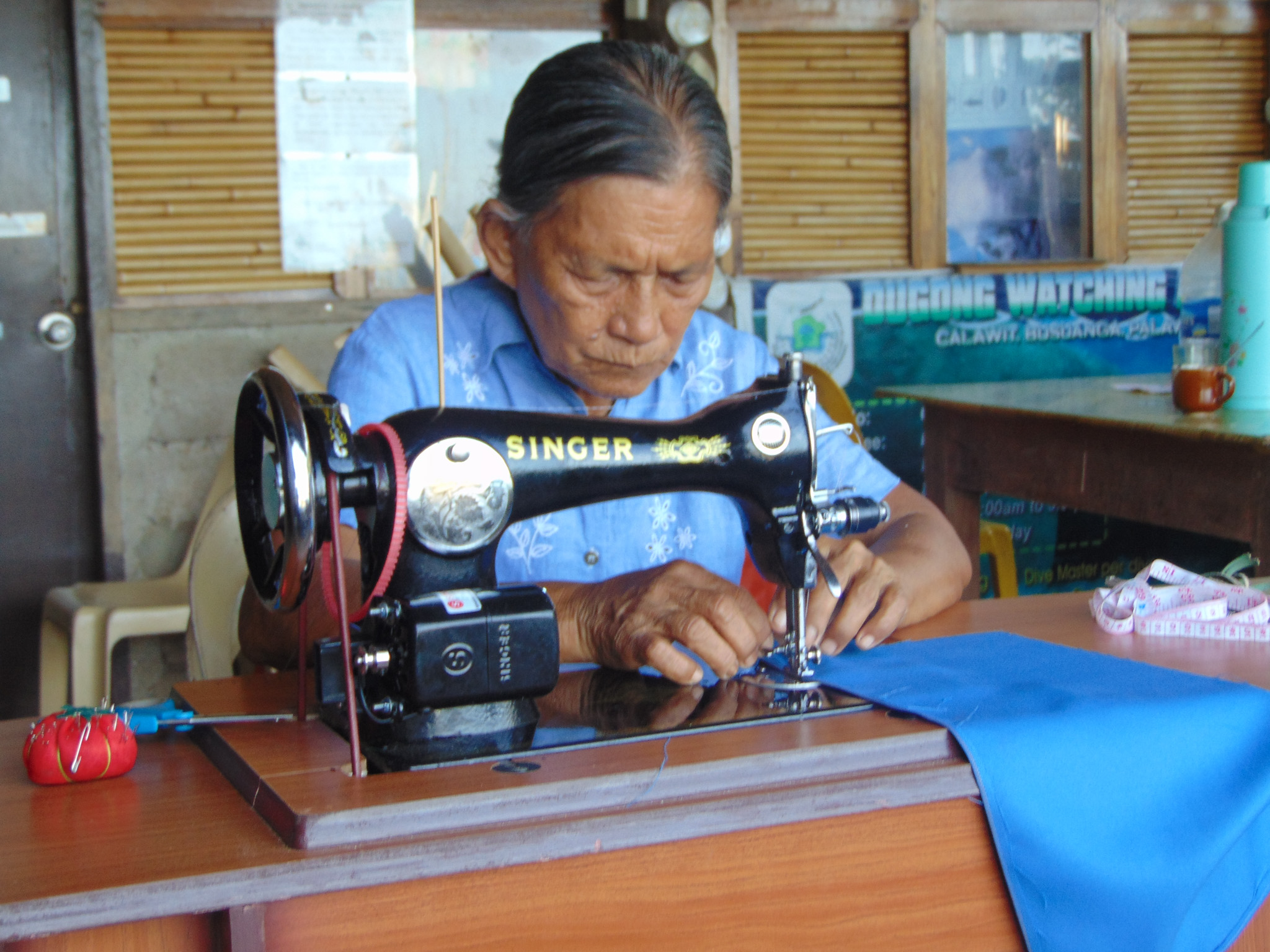
The dire situation compelled the women in Calauit to help their husbands earn income and meet the needs of their families and the community, said Rey Ramilo, program coordinator of Community Centred Conservation (C3) Philippines. The local nongovernmental organization started working with the Tagbanua community in 2016 after realizing the significance and richness of Calauit Island’s marine biodiversity.
“Siya (babae) ‘yung unang sumasalo ng burden, ‘yung hirap [na haharapin ng pamilya]…. ‘Yung pagiging nanay niya, pagmamahal niya sa pamilya, emotional [eto], siya ‘yung apektado. At ganun din pagdating sa economic. Sila ‘yung nagba-budget, naghahanap ng kakainin, or paano papakainin ‘yung pamilya,” he explained.
(The woman is the first to carry the burdens and difficulties faced by the family…. As mothers, given their love for their families, it’s emotional, and they’re affected by this. And that’s how they also approach economic concerns. They’re the ones who budget the money and find food or ways to feed their family.)
Old problems
But even before the pandemic, Eco said, cyanide fishing, which poisons marine habitats like corals, was already an issue for their coastal community. This threatened different fish and cachipay (a type of oyster) species within the ancestral domain.
Marivic Presentacion, a fisherwoman and the chairperson of the compliance and law enforcement committee of the Calauit WMA, said that in all of Busuanga, only Calauit has cachipay, which has been an additional and consistent source of food and livelihood for the Tagbanua even during the rainy season.
These environmental issues and the financial pressures caused by labor restrictions during the pandemic prompted the women to lobby for the establishment of the Calauit WMA. The effort focused on the management and protection of the cachipay.
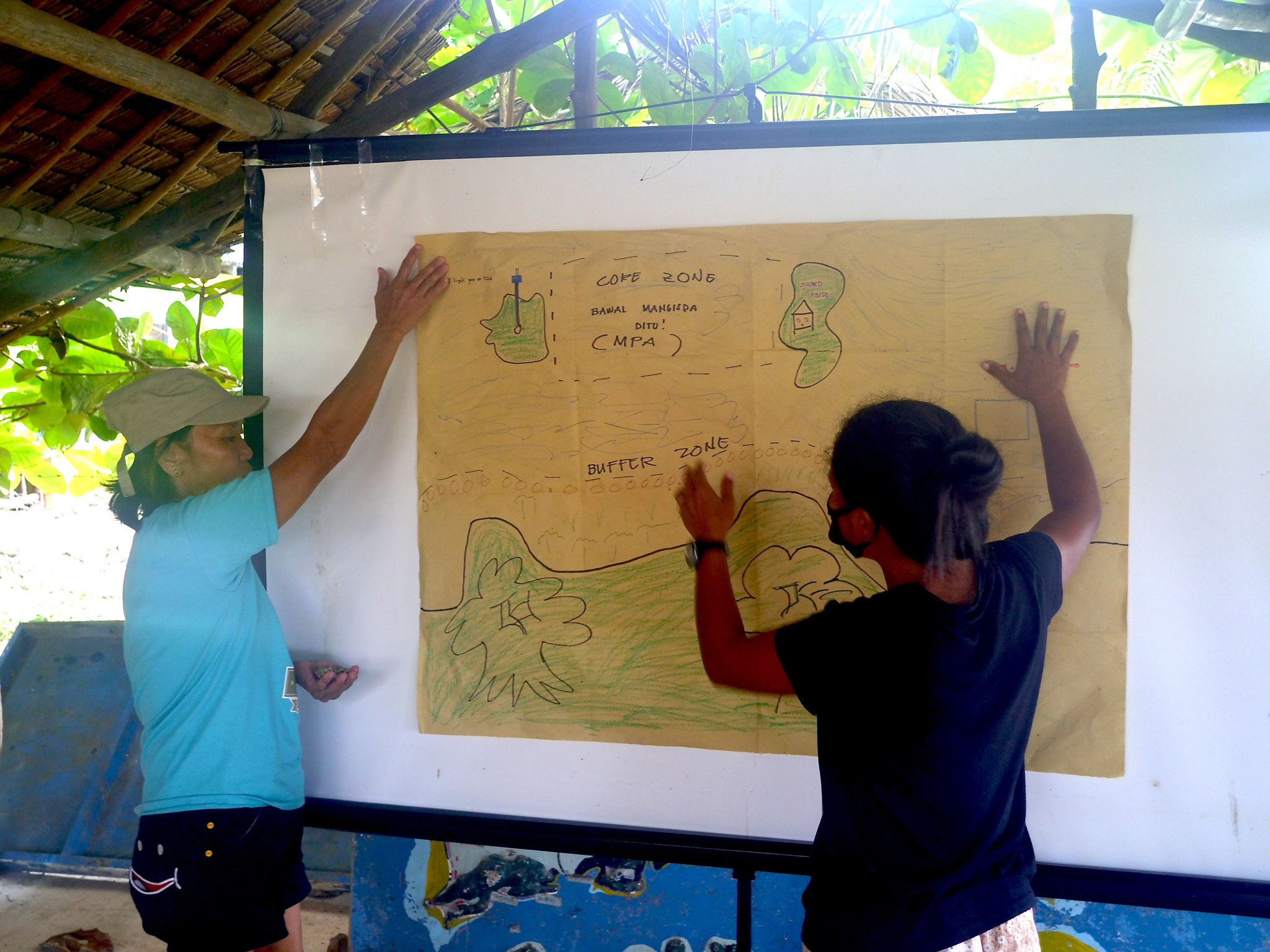
The process was anything but easy, given the patriarchal customs and traditions of the Tagbanuas, with the women viewed as incapable of supporting the family’s livelihood compared to the men.
“Noon, dito sa amin, ‘yung mga babae [ay] halos hindi paaralin kasi, kumbaga, mag-asawa lang daw [sila]. Kaya ‘yung lalaki na lang daw ‘yung paaralin kasi hindi makakatulong [ang babae sa paghahanap-buhay],” Presentation said, recalling her grandfather’s stories.
(Before, in our community, the women were almost not allowed to pursue their studies because their only perceived role was to marry. The men were the ones given an education because they said the women wouldn’t be of help in any livelihood.)
Until now, these customs and traditions have been affecting many of the Tagbanua women, including Presentacion’s own mother. But the Calauit WMA is challenging these beliefs, as it opened up an opportunity for the women to lead the community.
To develop the Calauit WMA, the Tagbanua women partnered with nonprofit conservation organization PATH Foundation Philippines, Inc. (PFPI) and C3 Philippines beginning 2020.
This WMA effort, anchored on the area’s ancestral domain plans, is part of the USAID Fish Right Program’s five-year agenda on building sustainable fisheries and strengthening marine biodiversity, spearheaded by the Coastal Resources Center at the University of Rhode Island.
Today, the Calauit WMA management council consists of 37 members and 6 committees that focus on the following:
- executive and management
- compliance and law enforcement
- livelihood and business
- research, education, and community participation
- finance, administrative, and organizational support
- fisheries and marine biodiversity
Protecting the cachipay
Harvesting cachipay has been one of the livelihoods of the Tagbanuas since historic times, especially whenever the people couldn’t fish in the waters due to strong waves, Eco said.
“Kung hindi po nakakapangisda ‘yung mga kalalakihan ng Calauit, dito po sila kumukuha ng kanilang pang-ulam at ‘yung iba naman po ay ibinebenta nila para po magkaroon ng dagdag na kabuhayan,” she explained.
(Whenever the men in Calauit couldn’t fish, they’d catch cachipay or sell it as an alternative livelihood.)
To preserve the cachipay, the Tagbanua women came up with their own management policies. This resulted in the zoning of the areas, namely: Strict Protection Zone (SPZ), Traditional Use Zone (TUZ), and Regulated Zone (RZ).
The SPZ is a restricted area where cachipays lay their eggs, and no one is allowed to enter. The TUZ is an open area for other barangays to harvest cachipay with sizes 3 inches and above – a process constantly monitored by the group. The RZ is an organized harvesting area exclusively for the use of the Calauit WMA members.

The management currently follows a closed season (June to October) and an open season (November to May) for harvesting cachipay. During the closed season, a rainy period wherein typhoons usually occur, the people aren’t allowed to get cachipay, and the focus is on monitoring the area to grow the species.
Presentacion said these are still experimental regulations for the year-old WMA, and the women are continually observing and studying the area to determine the most effective conservation methods.
The Calauit WMA is also based on an expansive Marine Protected Area (MPA) Network design in the Calamianes Group of Islands in Palawan, which aims to strengthen interconnected marine biodiversity and develop the communities’ capacities to become more resilient against climate change, among others.
According to a reference document, there are 27 member MPAs in the Calamianes MPA Network, which includes the WMAs and indigenous peoples-managed areas.
Given this, PFPI’s field program coordinator Vivien Facunla shared that the Calauit WMA partnership was approached with much respect for the indigenous tradition and culture.
Among other efforts, the partner organizations sought a Free and Prior Informed Consent before entering the community. They also ensure constant communication with the Tagbanua elders in their marine conservation efforts.
“Sa katutubo, ‘yun talaga estruktura nila since time immemorial. ‘Pag leader, lalaki talaga. Dapat ‘pag mag-ma-manage, lalaki talaga,” Facunla said.
(For the indigenous people, their structure has been patriarchal since time immemorial. Men are the leaders and managers.)
“May mga instances na ayaw nila [ang mga gagawin]…. Bumalik kami ulit doon kasi ‘yung mga kababaihan na mismo ‘yung nag-confront sa mga elders nila,” she recounted. “Kapag hindi pa sila ready, antayin lang [silang mag-decide].“
(There were instances when the elders didn’t like the proposed efforts…. But we went back to the community because the women confronted their elders. When the elders are not yet ready to engage, we just patiently wait for them to decide.)
This careful and elaborate consultative process led to the Tagbanua Council of Elders giving the women an official letter recognizing their leadership and management efforts. Although this document allows the women to have more leeway in managing marine resources, Eco said the group still consistently consults and seeks consent from the body for their conservation endeavors.
Ramilo observed that the Tagbanua women had doubted themselves at first due to perceptions of women being weak and men having greater capacity over them.
This was where C3 Philippines, with support from USAID Fish Right, more actively assisted the women by strengthening their skills and right to participation. The women received training in financial management, allowing them to establish a community-managed savings and credit association or CoMSCA. In addition, they were taught in natural resource monitoring and the use of scientific instruments, giving them confidence to speak up on how to manage their community’s resources.
While establishing such policies and having an organized women’s group in Calauit are vital successes that merit recognition, Ramilo said more work needs to be done to help the Tagbanua men have a greater appreciation of gender empowerment in their community.
For now, Eco said that even the scantest of changes bring feelings of pride and joy to the Tagbanua women as they more flexibly explore their capabilities and have new spaces beyond their homes.
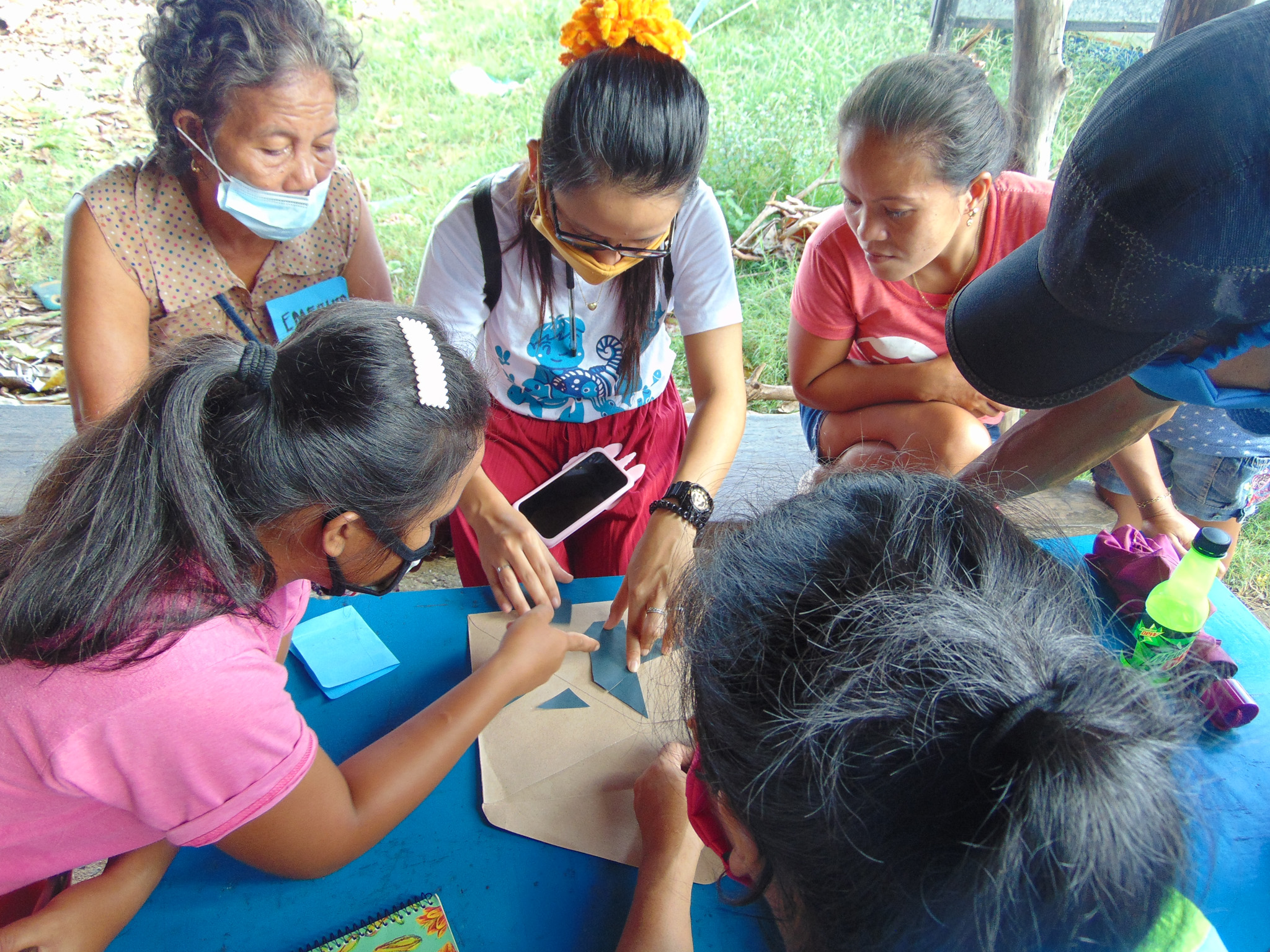
Transforming burdens
But having to stay at home has also provided the women a unique lens on resource management, Presentacion shared.
“Sa bahay, kami naiisip namin ‘pag mahina po ‘yung huli nila (mga asawa), paano kaya sa mga susunod pang panahon? Ano kayang mangyayari? Paubos na nang paubos [ang isda],” she explained.
(When we’re at home, we think about the times when our husbands only have a small catch. With depleting fish resources, what will happen in the future?)
The women’s foresight, which comes with them being natural nurturers, set them apart in the fisheries and marine conservation work, Ramilo said.
He also explained that women’s roles in fisheries, including mending nets, weighing the fish catch, or deciding what to do with the coastal resources are often unseen and underappreciated.
“Ang pangingisda kasi, ‘yung sa dating pananaw, natatapos sa panghuhuli ng isda. Hindi nakakasama ‘yung [nangyayari] pagbaba ng isda sa bangka,” Ramilo added.
(The traditional view of fishing is that it ends with the actual harvesting. We don’t consider what happens once the fish are unloaded from the boat.)
Facunla said women’s issues in fisheries are yet to be fully recognized and discussed at the regional and national levels.
While equal recognition and economic support are important, she stressed that gender-responsive efforts – such as providing women-centered livelihood assistance or prioritizing reproductive and health rights – should also be considered when addressing the needs of women in fisheries.
Amid the gaps, local interventions like the Calauit WMA provide women the opportunity to assert their space, participate, and decide on matters that gravely affect them, Facunla shared.
To date, the Calauit WMA is the ninth WMA established in the Philippines, according to Joveyln Cleofe of NGOs for Fisheries Reform, who was part of the team that developed the pioneer gendered management tool in the early 2000s.
It’s a continuous learning process, according to Eco, especially when many Tagbanua women face technical tasks in their marine management efforts. Eco, who is also a teacher and has a background in accounting, helps her peers learn finance and paperwork since many did not have formal education.
Eco said they are bent on carrying out marine protection work now that the Tagbanua women are now being recognized in the community and the young women are following suit.
Presentacion, who herself is a mother of three kids, also emphasized that by investing in marine conservation, the group strives to ensure that the next generation will not only live to benefit from the natural resources but also learn how to protect the environment they call home.
“Kapag ‘yung isang bagay gusto mong makatulong or makita mo na balang araw ay para sa kinabukasan ng pamilya mo o ng mga anak mo, magpupursige ka po talaga,” she stressed.
(When you want to help in an endeavor, or you see that it would benefit your family or your children in the future, you would really persevere.)
“Kaya ngayon po, nagpupursige kami na sana ay maabutan pa po nila para maranasan nila, para makita nila, [para] matikman nila kung ano ang cachipay.“
(That’s why we’re persevering now so our children would come to know, experience, see, and taste the cachipay.) – Rappler.com
Add a comment
How does this make you feel?

![[Rappler’s Best] US does propaganda? Of course.](https://www.rappler.com/tachyon/2024/06/US-does-propaganda-Of-course-june-17-2024.jpg?resize=257%2C257&crop=236px%2C0px%2C720px%2C720px)

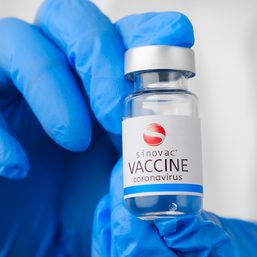




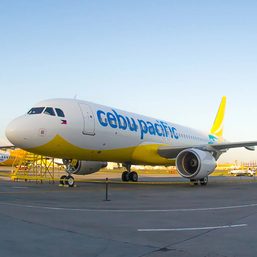

![[OPINION] Unpaid care work by women is a public concern](https://www.rappler.com/tachyon/2024/07/20240725-unpaid-care-work-public-concern.jpg?resize=257%2C257&crop_strategy=attention)


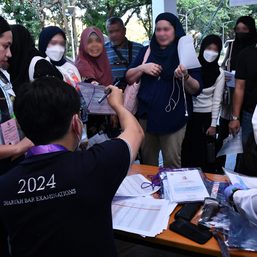

There are no comments yet. Add your comment to start the conversation.